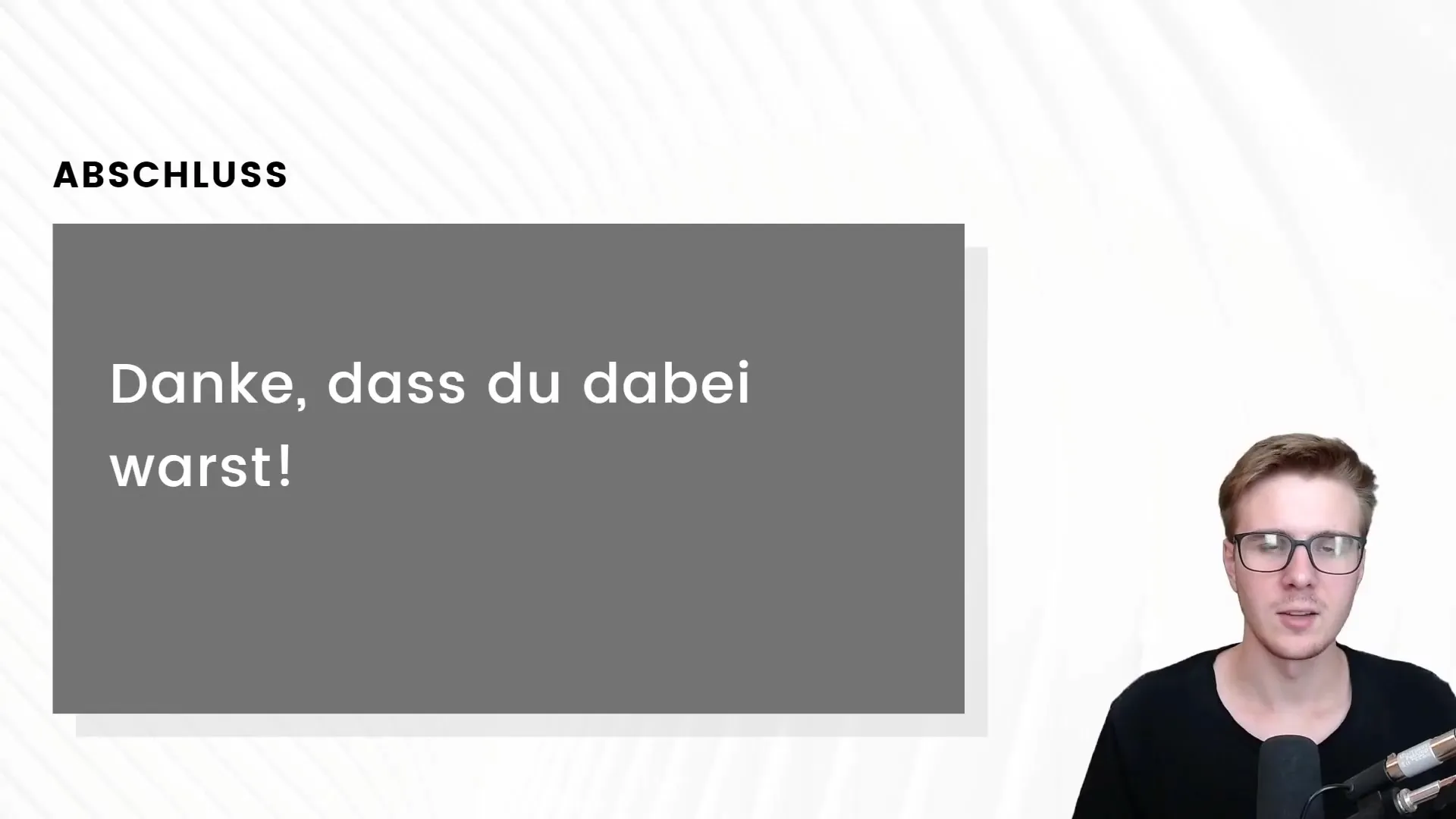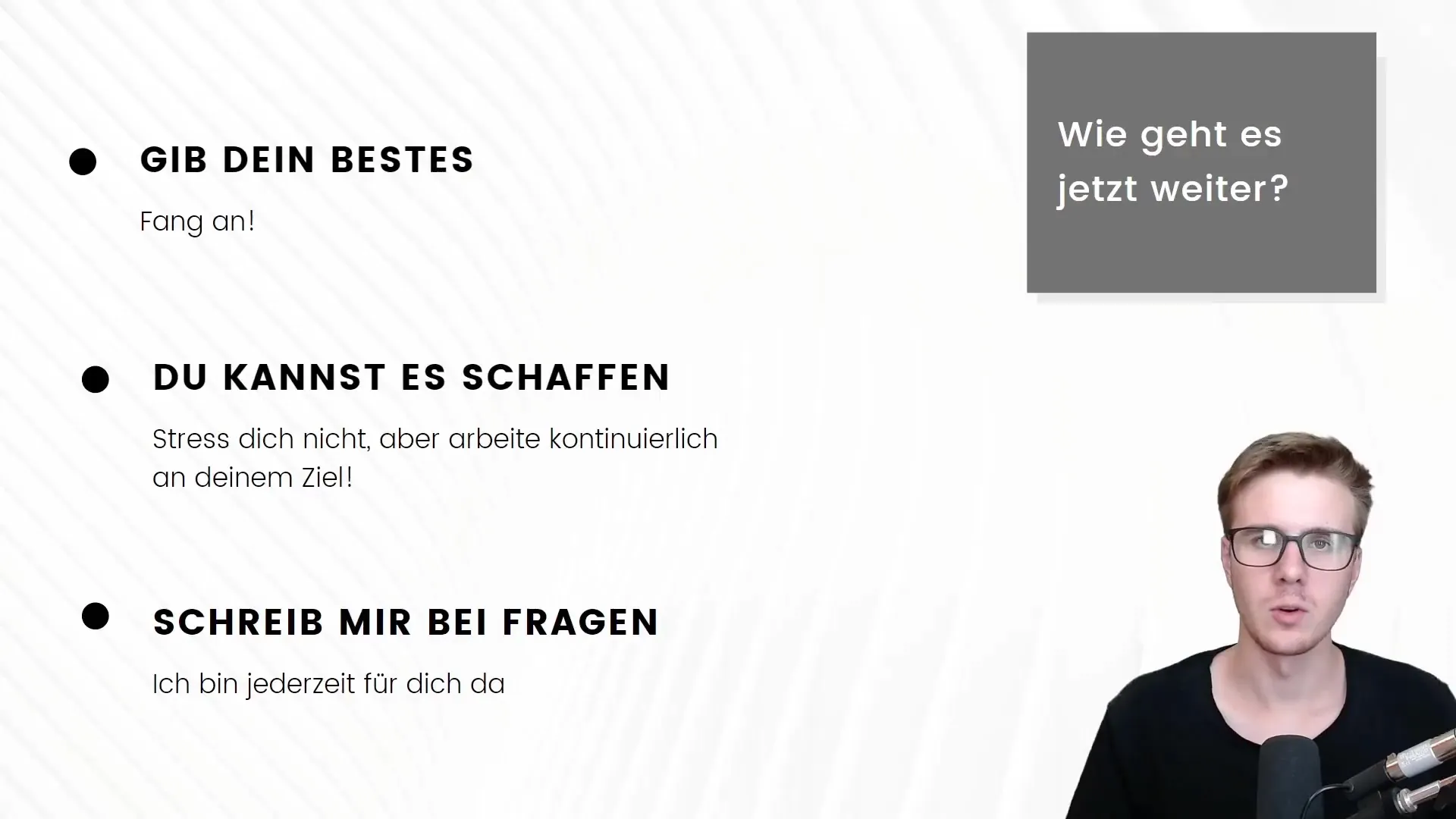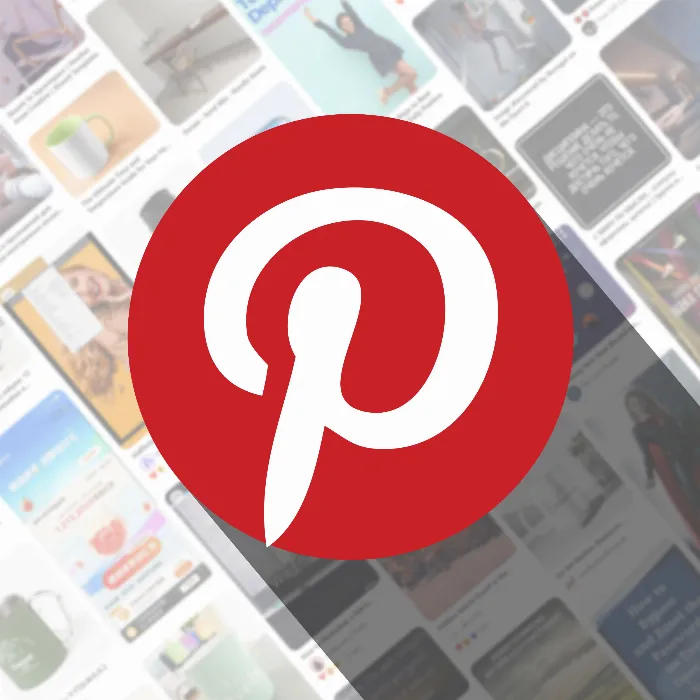Completing a video course is often the beginning of a new journey. You have acquired valuable knowledge about Pinterest marketing and are now faced with the challenge of putting this knowledge into practice. It is important to develop the right steps and strategies to successfully apply what you have learned. In this guide, I want to give you some key points and recommendations so that you can sustainably benefit from your newly acquired knowledge.
Key Insights
- Theory is important, but only practical application leads to success.
- Continuous learning, in small units, promotes efficiency.
- Utilize your resources and work to find answers to open questions.
Step-by-Step Guide
1. Practical Implementation
The most important insight from your course is that knowledge alone is not enough to make progress. You must take action and apply your new knowledge. Set specific goals and work with the learned content by planning and executing your first Pinterest campaign. The process will not only help solidify the theory but also gain practical experience.

2. Regular Learning and Practice
An effective learning approach is to schedule daily learning sessions. For example, dedicate 30 minutes to an hour daily to immerse yourself in Pinterest. Instead of investing multiple hours once a week, you will find that your brain can better process the knowledge when consumed regularly in small portions. This leads to better results and a deeper understanding of the content.

3. Creating a Personal Schedule
To ease the transition from theory to practice, you should create a structured schedule. Make sure to allocate fixed times for your Pinterest activities. This increases the chances of staying on track and consistently working towards your goals. Stick to your plan and reward yourself for progress to stay motivated.
4. Feedback and Questions
Dialogue with others holds significant value in the learning process. Do not hesitate to ask questions and engage with others. You have the opportunity to directly contact me to clarify any issues. This can be done either via email or in discussion forums. This ensures that your learning journey does not stagnate and you receive quick answers.
5. Schedule Breaks
After the course, it is beneficial to schedule a short break to let the knowledge sink in. Reflect on your previous insights and consider how you can integrate the knowledge into your work. Taking a brief pause from new content helps you internalize the previous lessons better and prepare for the next steps.
Summary
Success in Pinterest marketing lies in the practical application of what you have learned. Consuming content alone is not enough; you must take action. A structured approach and regular practice will help you anchor your knowledge sustainably. Planning specific learning units and engaging with others will move you forward. Take time for reflection and put the first steps into practice. This way, you will grow and thrive in the world of Pinterest marketing.
Frequently Asked Questions
How do I implement what I've learned from the course into practice?Start by planning your first Pinterest campaign and regularly work on your strategy.
How often should I engage with Pinterest?It is recommended to schedule 30 minutes to an hour daily to process the content better.
Can I contact you with questions?Yes, you can send me an email at any time to clarify open questions.
How long should I take a break after the course?A short break after the course allows you to reflect on and consider how to apply what you've learned.
Why is regular learning effective?Regular learning in small units improves the anchoring of knowledge in the brain.

